



India and Mongolia mark 70 years of diplomatic ties built on Democracy, Dharma, and Development. Their Strategic Partnership deepens through defence drills, India’s $1.7 billion refinery project, and mutual UN support, advancing India’s Act East and Mongolia’s Third Neighbour policies for a balanced Indo-Pacific.
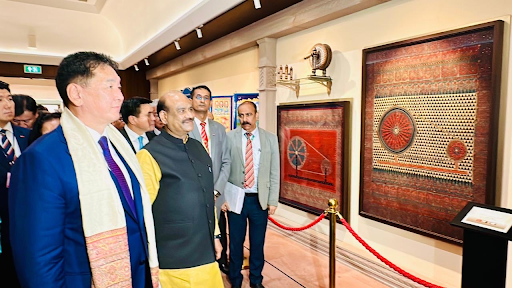
Copyright infringement not intended
Picture Courtesy: PIB
The President of Mongolia, Khurelsukh Ukhnaa, made a state visit to India to commemorate the 70th anniversary of diplomatic relations
Economic and development cooperation
Defence and security
Cultural and people-to-people ties
Multilateral cooperation
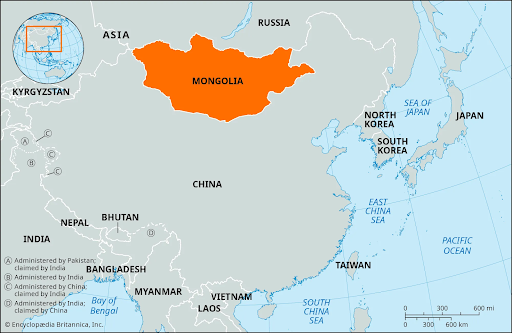
Early Foundations (1955-1990s)
India established diplomatic ties with Mongolia in 1955, an early supporter outside the Soviet bloc. During the Cold War, India's support for Mongolia's international recognition, including UN membership, gained goodwill.
The Democratic Turn (Post-1990s)
Following Mongolia's peaceful democratic revolution in 1990, India and Mongolia, sharing political values, deepened their engagement as two democracies in the region.
Strategic Partnership (2015)
In 2015, PM Modi's visit elevated the relationship to a "Strategic Partnership," shifting focus from culture to strategy and security.
Recent Momentum
Lok Sabha Speaker Shri Om Birla's 2023 visit to Mongolia strengthened parliamentary ties via an MoU. Mongolian President October 2025 visit to India for the 70th anniversary of diplomatic relations reaffirms this deep partnership.
Geostrategic Location
Mongolia, a democratic country located between China and Russia, is a strategic partner for India in Asia. Strengthening this relationship helps India achieve its goal of a multipolar Asia.
Part of India's "Act East" and "Third Neighbour" Policy
Mongolia is crucial to India's Act East Policy. India serves as Mongolia's vital "third neighbour," offering a democratic alternative to balance its foreign policy and lessen over-reliance on its two powerful neighbours.
|
Mongolia's "Third Neighbour" policy is a foreign relations strategy designed to foster strong relationships with nations beyond its immediate, influential neighbours, Russia and China. |
Economic Potential (Minerals)
India seeks to obtain strategic minerals like copper, coal, and uranium from Mongolia to fuel its growing economy and satisfy its energy and industrial requirements.
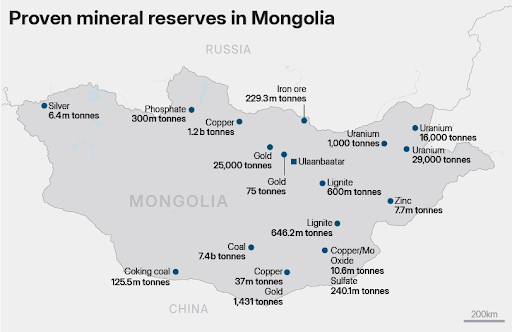
Cultural and Spiritual Connect (Soft Power)
India and Mongolia have a strong relationship built on their shared Buddhist heritage, which gives India significant soft power and goodwill in Mongolia.
India's policy towards Mongolia, summarized by Lok Sabha Speaker Shri Om Birla as the "3D" principles (Democracy, Dharma, and Development).
Defence and Security: The annual "Nomadic Elephant" joint military exercise strengthens interoperability, and India assists Mongolia with cybersecurity.
Economic Cooperation: India has provided Line of Credit for Mongolia's first greenfield oil refinery near Ulaanbaatar, a project that will reduce Mongolia's reliance on Russian fuel.
IT, Health, and Education: India supports human resource development through the Indian Technical and Economic Cooperation (ITEC) program, offering technical assistance and scholarships to Mongolian students.
Lack of Direct Connectivity
Being a landlocked country with no direct sea or land route to India, physical connectivity is a major obstacle. This severely limits the potential for bilateral trade and investment.
Low Economic Engagement
India-Mongolia bilateral trade was only $110 million in 2024, dwarfed by Mongolia's $19 billion trade with China. (Source: thediplomat)
China's Overwhelming Influence
China is Mongolia's largest trading partner and investor. Its immense economic and political leverage in Mongolia can limit the operational space for other partners like India.
Project Implementation Delays
The challenging geography and harsh climate of Mongolia lead to delays in the implementation of infrastructure projects like the oil refinery.
Enhancing Connectivity
Explore viable third-country transit routes, such as using Russia's Far-East port of Vladivostok or leveraging the International North-South Transport Corridor (INSTC) to create a more reliable trade link.
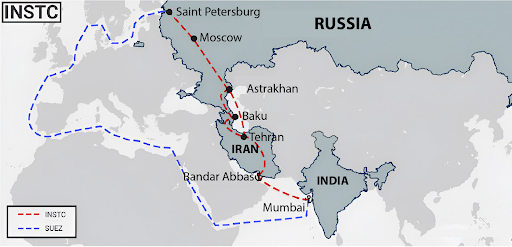
Expediting Flagship Projects
Ensure the timely completion of the oil refinery project, as its success will be a powerful symbol of India's commitment as a development partner.
Boosting Trade and Investment
Diversify the economic basket beyond raw materials. Focus on high-potential sectors like IT services, pharmaceuticals, and renewable energy, where India has significant expertise.
Strengthening People-to-People Ties
Increase youth exchanges, tourism (Buddhist circuit tourism), and educational collaborations to build on the foundation of goodwill.
The India-Mongolia relationship, built on shared values like Democracy, Dharma, and Development, has grown from ancient ties into a modern Strategic Partnership. Despite geographical and geopolitical challenges, their strong spiritual and democratic bond endures.
Source: PIB
|
PRACTICE QUESTION Q. Discuss the potential for cooperation between India and Mongolia in the critical minerals sector. 150 words |
As a landlocked nation situated between China and Russia, Mongolia follows a "Third Neighbour Policy" to broaden its international relations beyond its two powerful neighbors. In this context, India is a crucial "third neighbor" due to shared democratic values and spiritual ties.
The Great Lakes Depression is a large, semi-arid basin in western Mongolia, nestled between the Altai and Khangai mountain ranges. It contains more than 300 lakes, including saline Lake Uvs, the largest by area, and freshwater Lake Khar-Us.
Despite being a strategically important and growing partnership, trade between Mongolia and India remains low, at $110 million in 2024, due to logistical challenges. However, the October 2025 state visit by Mongolian President Khurelsukh has boosted efforts to expand cooperation.
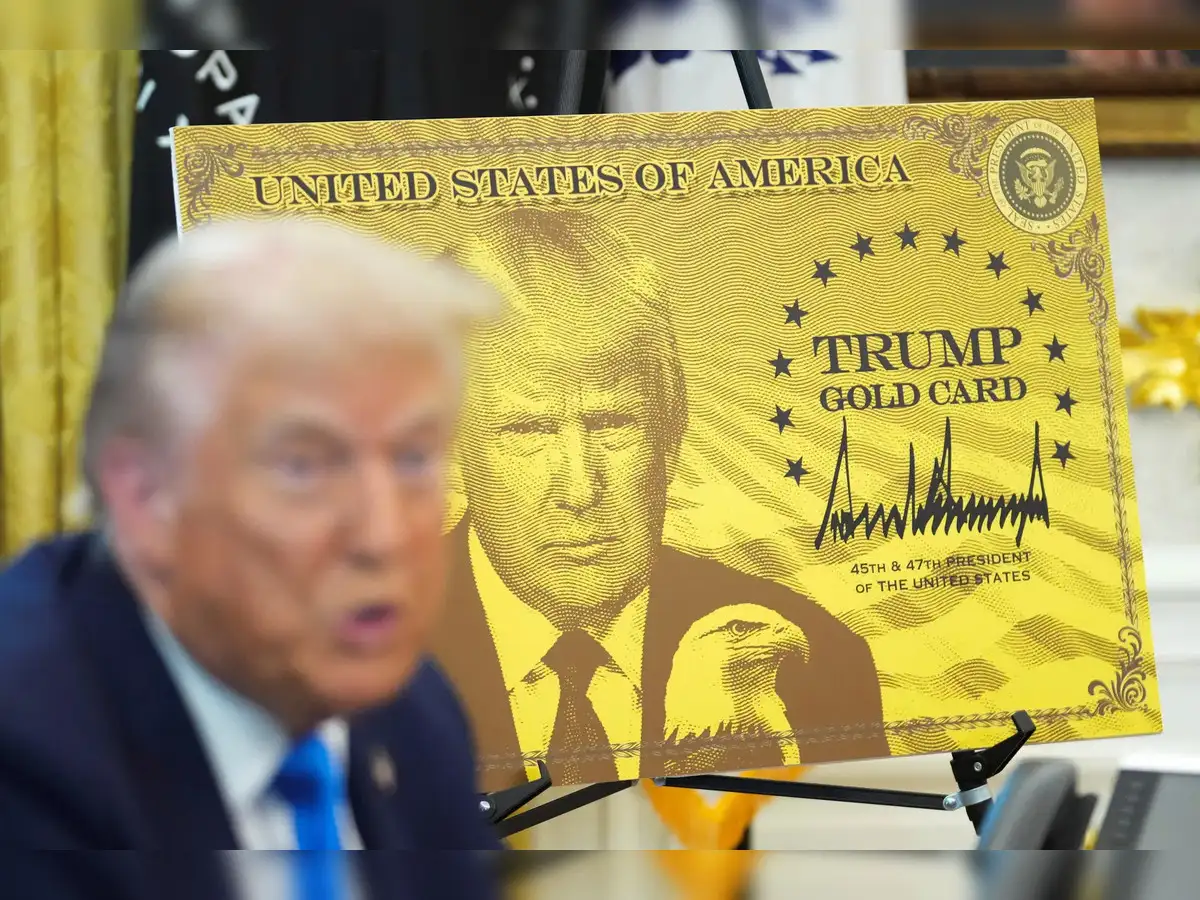


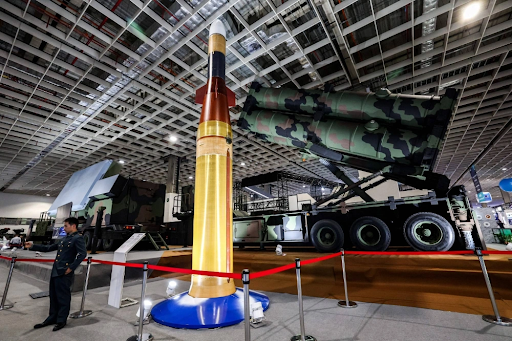

© 2025 iasgyan. All right reserved